Asia-Pacific Connected Cars Market Size
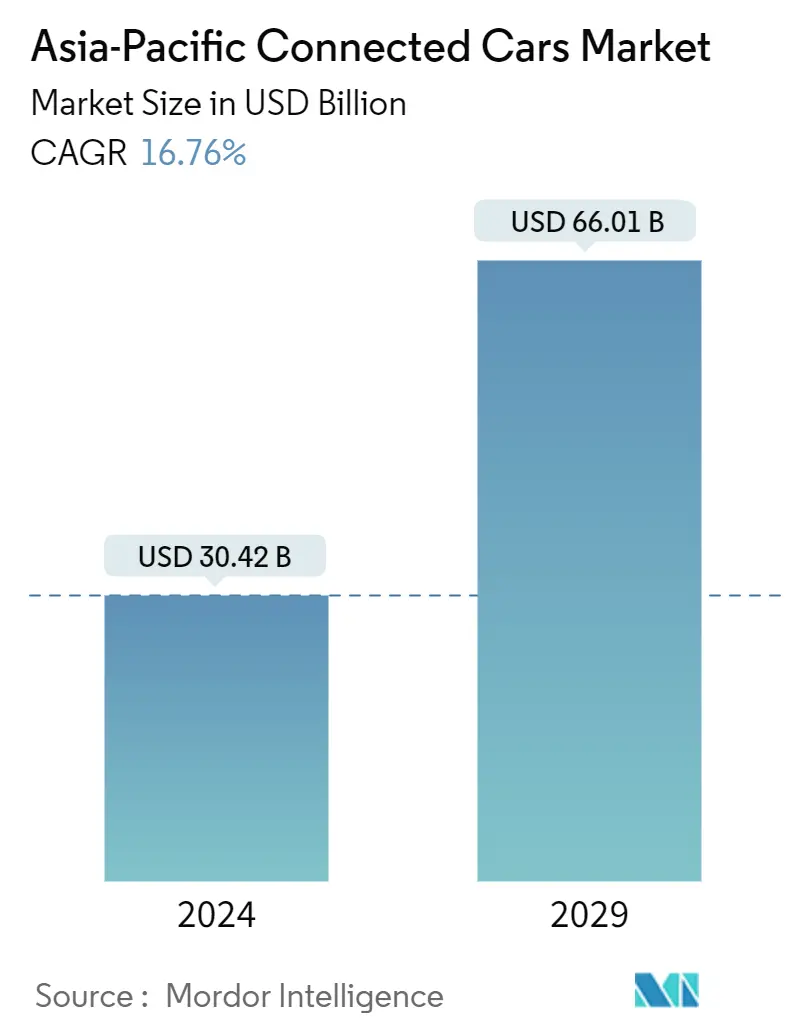
| Study Period | 2019 - 2029 |
| Base Year For Estimation | 2023 |
| Market Size (2024) | USD 30.42 Billion |
| Market Size (2029) | USD 66.01 Billion |
| CAGR (2024 - 2029) | 16.76 % |
| Market Concentration | Medium |
Major Players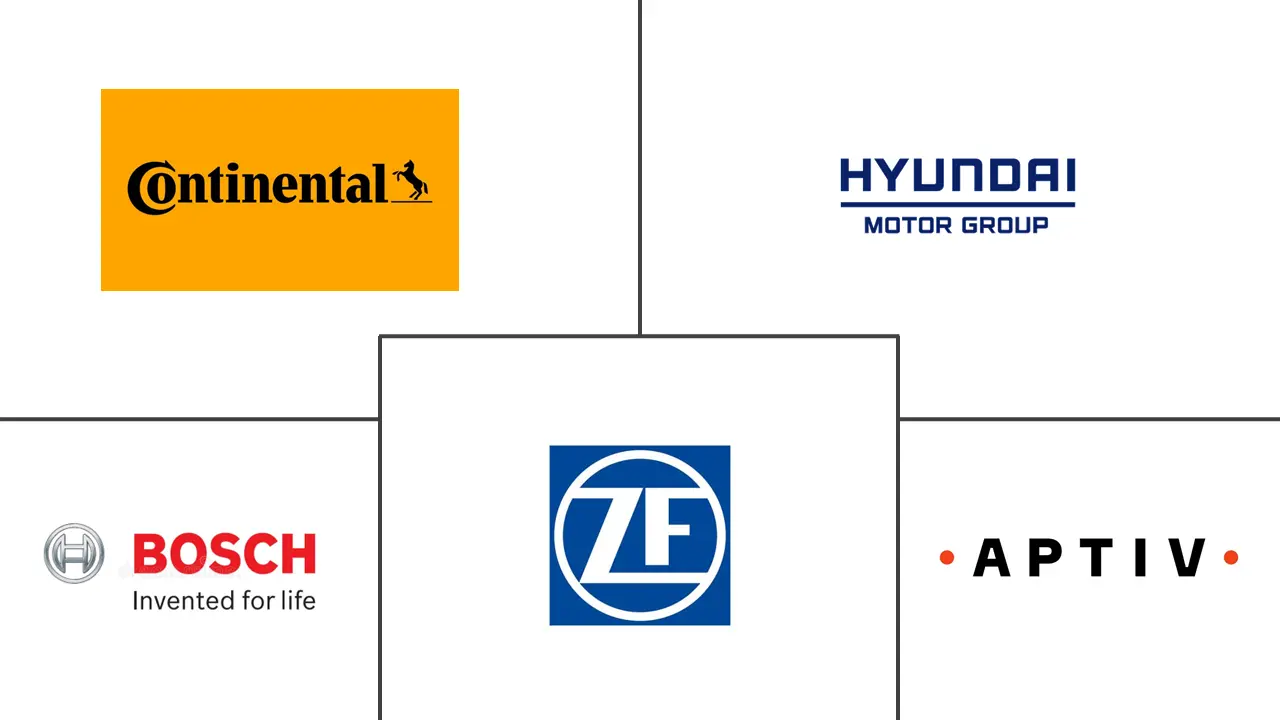
*Disclaimer: Major Players sorted in no particular order |
Asia-Pacific Connected Cars Market Analysis
The Asia-Pacific Connected Cars Market size is estimated at USD 30.42 billion in 2024, and is expected to reach USD 66.01 billion by 2029, growing at a CAGR of 16.76% during the forecast period (2024-2029).
Over the long term, increasing investments in R&D by major industry players, preference by new young car buyers for connectivity features, rise in adoption of smartphones, an increase in sales of electric and autonomous vehicles, as well as rising internet connectivity and falling data prices are driving demand for connected cars market across the Asia-Pacific region.
Enhancement of network infrastructure in countries such as China and India to develop their 5G connectivity ecosystem is complementing various auto manufacturers to integrate this space and offer advanced vehicle models to consumers. It helps them access real-time information on vehicle performance, door locking/unlocking through smartphones and a range of other features.
Key players in the market are expanding their investments and entering into tie-ups with telecom companies to cater to the increased demand for connected cars. For instance, in May 2023, MediaTek, a Taiwanese-based semiconductor company, announced its partnership with NVIDIA to design an automotive solution for intelligent and connected vehicles with the integration of artificial intelligence and accelerated computing. In August 2022, SAIC Motor and OPPO entered into a joint venture to create a software platform for cross-integration between cars and smartphones.
In March 2022, Chinese state-owned SAIC Motor announced to invest USD 43 billion into advanced automotive technologies, including connected automotive solutions, over the next five years.
The connected cars market in the Asia-Pacific region will witness surging growth during the forecast period, owing to the consumers' increasing preference towards availing of services that give real-time information about vehicle health, traffic conditions, weather conditions, etc. Coupled with that, rising internet penetration, the advent of 5G, and the proliferation of low-cost smart devices are further anticipated to bolster the demand for connected cars market across the Asia-Pacific region.
Asia-Pacific Connected Cars Market Trends
Integrated Navigation System to gain significant Traction in the coming years
The navigation segment in the connected cars market is expected to showcase surging growth due to the extensive use of GPS systems by drivers. They use it for route finding and route planning services in congested cities like Shanghai, Tokyo, Mumbai, Jakarta, Bangkok, and Seoul to avoid traffic jams and get to their destinations quickly. For instance, Bengaluru in India is ranked as the second most congested in the world as of 2022, with drivers spending nearly 260 hours a year in traffic rush.
Further, it is estimated that the average daily traffic volume on national highways in South Korea expanded at a CAGR of 0.6% between 2018-2022. Therefore, accessing real-time information becomes extremely necessary for consumers to save driving time and enhance their driving experience. It is solved by the integration of navigation systems in vehicles.
Moreover, increasing government support and enhancement of the network capability of countries across the Asia-Pacific region is further aiding the demand for integrated navigation systems in vehicles. The Chinese Ministry of Industry and Information is actively encouraging carmakers to adopt the domestically developed Beidou satellite navigation system in their connected cars. Thus, many car manufacturers are launching new models with built-in connectivity features to tap into the incremental growth opportunities in the market. For instance,
- In March 2023, Chinese electric vehicle manufacturer Xpend announced the launch of its advanced driver assistance system (ADAS), which is similar to Tesla's full self-driving (FSD) software. It enables its cars to navigate their way automatically on city streets. The newly developed X NGP (navigation-guided pilot) software can be fitted in G9 Max and P7i Max models in Guangzhou, Shenzhen, and Shanghai.
- In August 2022, Toyota launched the new generation of Sienta in Japan. It comes with a suite of optional T-Connectivity services like destination services and route settings.
The increasing smartphone penetration rate across countries such as India and China is positively contributing to the growth of the navigation segment of the connected cars market. It is because certain vehicle model allows the on-screen display of routes, which is connected via smartphone. It helps in enhancing customers' convenience in locating nearby shops, petrol stations, malls, and other places. Therefore, the integration of navigation systems is anticipated to become a requirement of consumers willing to purchase connected cars, thereby positively impacting the growth of this segment during the forecast period.
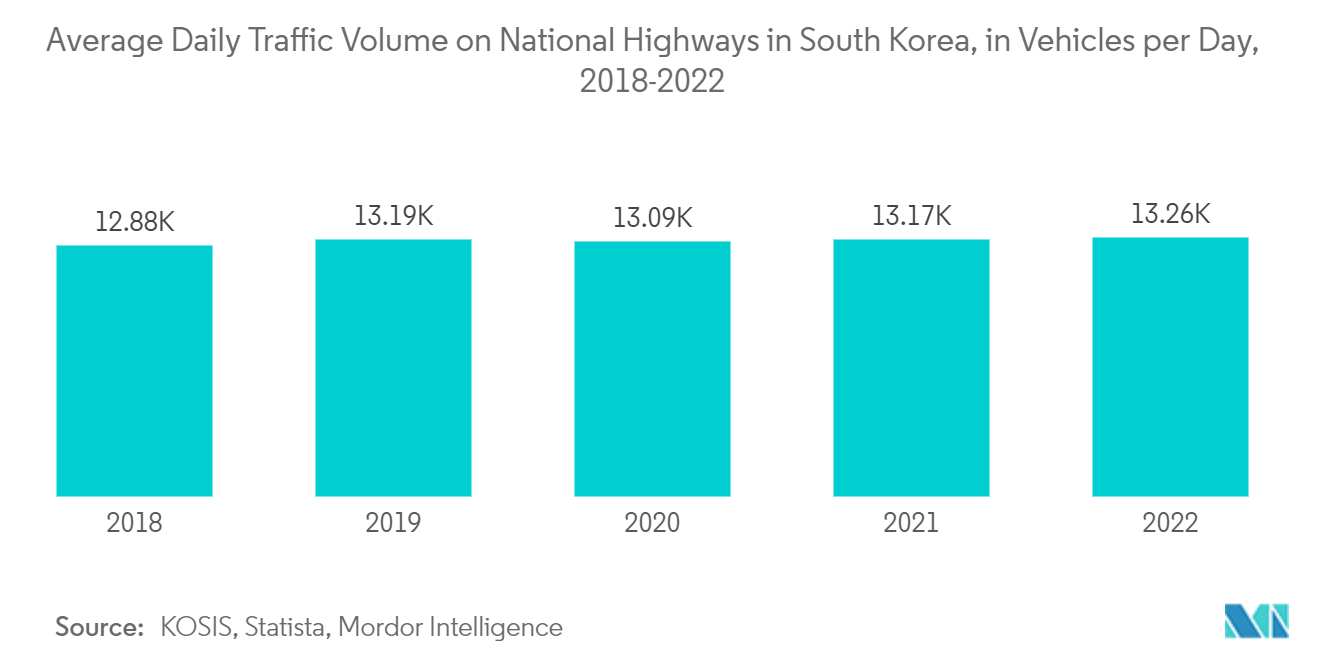
China to dominate the Asia-Pacific Connected Cars Market during the forecast period
The increasing urbanization rate, growing population, and rising per capita disposable income of consumers across China serve as major determinants for the growth of the connected cars market in these countries. According to the World Bank, the urbanization rate in China stood at 64% in 2022, a substantial increase from 2018, when the urbanization rate stood at only 59%. Further, it is estimated that the per capita disposable income in China stood at CNY 36,883 (USD 5,046) in 2022, representing a nominal increase of 5% compared to 2021 and a real increase of 2.9% after deducting price factors. As more consumers migrate to urban cities for better employment and financial opportunities, there exists a greater demand for private transportation medium. Along with that, the increasing personal disposable income of consumers leads to enhancing the demand for advanced vehicles in the market, such as connected cars.
Moreover, enhancement in 5G technology and rapid investment in developing an efficient cloud network infrastructure are further fuelling the demand for connected cars in China.
- It is estimated that as of March 2023, China is successful in building 2.31 million 5G base stations covering all prefecture-level cities, counties, and urban areas nationwide.
Since connected cars rely heavily on fast internet and cloud services, China's aggressive strategy to expand the 5G network is assisting domestic auto manufacturers in the country. It is to utilize this opportunity and launch advanced connected cars in the market, which relies heavily on network connectivity.
The connected cars market is expected to significantly expand during the forecast period with increasing government support to promote the usage of connected vehicles.
- For instance, in September 2022, the General Office of Shanghai Municipal People's Government in China issued an implementation plan to accelerate the development of connected cars in Shanghai. According to the plan, the city of Shanghai will build an efficient development system for intelligent connected vehicles (ICVs) by 2025. It enables the ICV industrial scale to reach CNY 500 billion (USD 68 billion) in the next two years.
Rapid advancement in technology, integration of artifact intelligence and telematics in connected cars, and governments increasing support will positively contribute to the growth of the connected cars market during the forecast period.
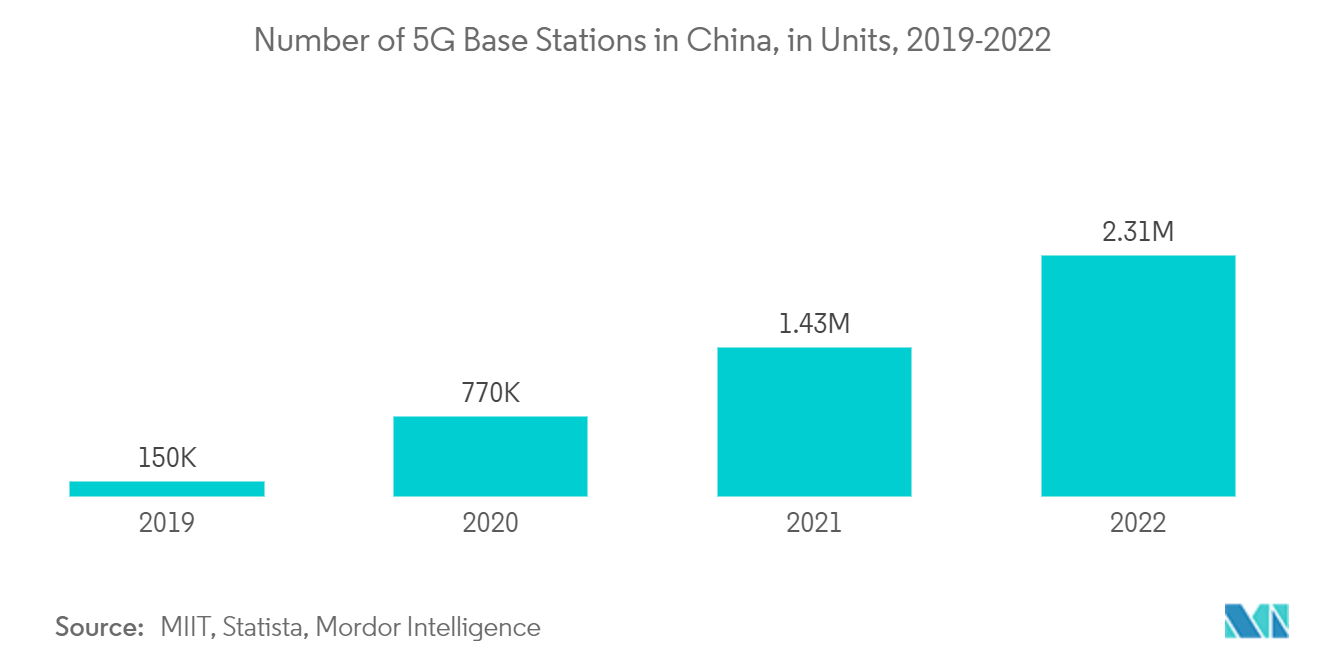
Asia-Pacific Connected Cars Industry Overview
The Asia-Pacific Connected Cars Market is fragmented and highly competitive, with the presence of various domestic and international players operating in the market. The market is characterized by the presence of considerably large players as well as new technology startups. Some of the major players operating in the market include Continental AG, Hyundai Motor Group, Robert Bosch GmbH, ZF Friedrichshafen, Aptiv PLC, Denso Corporation, SAIC Motor Corporation, and NXP Semiconductors, among others. These players actively engage in joint ventures, mergers and acquisitions, new product launches, and product development to expand their brand portfolios and cement their market positions.
- In December 2022, Tata Motor, an India-based automotive manufacturer, announced that it would showcase new developments in the fields of connected car technology, advanced driver assistance system (ADAS), and hydrogen as a fuel alternative at the Auto Expo 2023.
- In September 2022, Changan Automobile launched a new brand 'Zhuge Intelligence' which will offer four vehicle connectivity services: navigation, cruise control, parking detection, and escort. The company also unveiled CD701 Prototype, its first vehicle built on its new SDA platform.
- In March 2022, Hyundai inaugurated its first manufacturing facility in ASEAN located at Cikarang in Indonesia, with an investment of USD 1.55 billion and an annual capacity of 250,000 units. The facility will produce new models like Creta, Santa Fe, Tucson, Stargazer, and IONIQ 5, which will be equipped with the latest connectivity features.
The market is anticipated to witness the launch of advanced connectivity technology features in the coming years. It is because the companies operating in this space are trying to gain a competitive edge with the diversification of their product portfolio across the Asia-Pacific region.
Asia-Pacific Connected Cars Market Leaders
-
Continental AG
-
Robert Bosch GmbH
-
ZF Friedrichshafen
-
Aptiv PLC
-
Hyundai Motor Group
*Disclaimer: Major Players sorted in no particular order
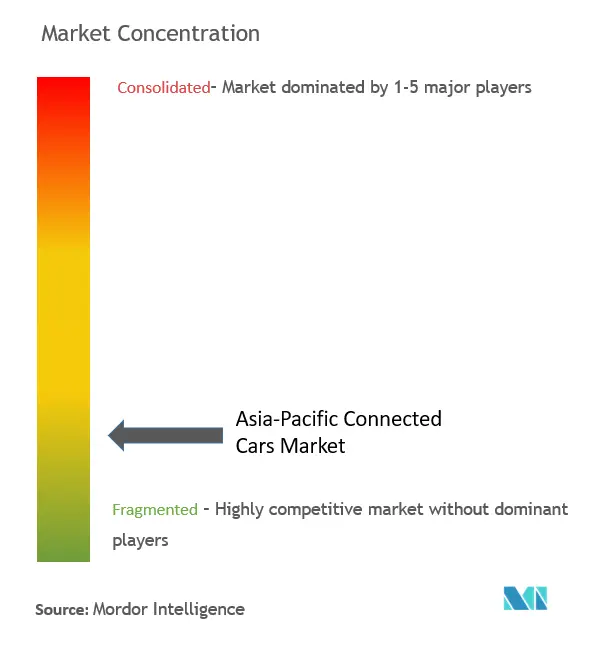
Asia-Pacific Connected Cars Market News
- June 2023: Hyundai Motor Group, a multinational automotive manufacturer based out of South Korea, announced that its connected car services reached 10 million subscribers, owing to the growth in overseas subscribers using Bluelink, Kia Connect, and Genesis Connected Services. The company further stated that it expected that its connected car services would reach 20 million subscribers by the end of 2026.
- April 2023: MG Motor India announced the launch of its latest Comet electric vehicle model at an introductory price of INR 7.98 lakh (USD 9,608), which is equipped with an inbuilt iSmart system that supports over 55 connected car features and over 100 voice commands.
- September 2022: Hyundai Motor Group and KT Corporation signed a joint venture to focus on next-generation infrastructure and ICT, including 6G autonomous driving technology and Advanced Air Mobility (AAM) communication networks based on satellite communication.
Asia-Pacific Connected Cars Market Report - Table of Contents
1. INTRODUCTION
1.1 Study Assumptions
1.2 Scope of the Study
2. RESEARCH METHODOLOGY
3. EXECUTIVE SUMMARY
4. MARKET DYNAMICS
4.1 Market Drivers
4.1.1 Increasing Demand for Vehicle Safety and User Convenience
4.2 Market Restraints
4.2.1 Vulnerability to Cyber Attacks
4.3 Industry Attractiveness - Porter's Five Forces Analysis
4.3.1 Bargaining Power of Suppliers
4.3.2 Bargaining Power of Buyers/Consumers
4.3.3 Threat of New Entrants
4.3.4 Threat of Substitute Products
4.3.5 Intensity of Competitive Rivalry
5. MARKET SEGMENTATION (Market Size in Value - USD)
5.1 By Vehicle Type
5.1.1 Passenger Cars
5.1.2 Commercial Vehicles
5.2 By Technology Type
5.2.1 Navigation
5.2.2 Entertainment
5.2.3 Safety
5.2.4 Vehicle Management
5.2.5 Others (Multimedia Streaming etc.)
5.3 By Vehicle Connectivity
5.3.1 Vehicle-to-Vehicle (V2V)
5.3.2 Vehicle-to-Infrastructure (V2I)
5.3.3 Vehicle-to-Everything (V2X)
5.4 By End-User Type
5.4.1 Original Equipment Manufacturer (OEM)
5.4.2 Aftermarket/Replacement
5.5 By Country
5.5.1 India
5.5.2 China
5.5.3 Japan
5.5.4 South Korea
5.5.5 Rest of Asia-Pacific
6. COMPETITIVE LANDSCAPE
6.1 Vendor Market Share
6.2 Company Profiles*
6.2.1 BMW AG
6.2.2 Audi AG
6.2.3 Continental AG
6.2.4 Mercedes Benz Group AG
6.2.5 Denso Corporation
6.2.6 Robert Bosch GmbH
6.2.7 NXP Semiconductors
6.2.8 ZF Friedrichshafen
6.2.9 SAIC Motor Corporation
6.2.10 Hyundai Motor Group
6.2.11 NVIDIA Corp.
6.2.12 Harman International
6.2.13 TomTom N.V.
6.2.14 Volvo AB
6.2.15 Aptiv PLC
6.2.16 Airbiquity Inc
7. MARKET OPPORTUNITIES AND FUTURE TRENDS
7.1 Advancements in 5G, Artificial Intelligence (AI), and IoT (Internet of Things) Technology
Asia-Pacific Connected Cars Industry Segmentation
A connected car is a type of vehicle that can share data both inside and outside the vehicle with other vehicles and third-party players like navigation providers, telecom companies, and cloud services. A connected car communicates bidirectionally, usually through WLAN networks. However, many modern cars also support Wi-Fi, 4G, and 5G networks for connectivity. Connected cars provide essential data like fuel consumption, tire pressure, navigation, and weather updates to the driver of the vehicle. Connected cars also provide other information like nearby places of interest such as malls and restaurants as well as hospitals in case of any medical emergency or an accident.
The Asia-Pacific connected cars market is segmented by vehicle type, technology type, vehicle connectivity, end-user type, and country. By vehicle type, the market is segmented into passenger vehicles and commercial vehicles. By technology type, the market is segmented into navigation, entertainment, safety, vehicle management, and others (multimedia streaming, etc.). By vehicle connectivity, the market is segmented into vehicle-to-vehicle (V2V), vehicle-to-infrastructure (V2I), and vehicle-to-everything (V2X). By end-user type, the market is segmented into original equipment manufacturer (OEM) and aftermarket/replacement). By country, the market is segmented into India, China, Japan, South Korea, and the rest of Asia-Pacific.
The report offers market size and forecasts for Connected Cars in value (USD) for all the above segments.
| By Vehicle Type | |
| Passenger Cars | |
| Commercial Vehicles |
| By Technology Type | |
| Navigation | |
| Entertainment | |
| Safety | |
| Vehicle Management | |
| Others (Multimedia Streaming etc.) |
| By Vehicle Connectivity | |
| Vehicle-to-Vehicle (V2V) | |
| Vehicle-to-Infrastructure (V2I) | |
| Vehicle-to-Everything (V2X) |
| By End-User Type | |
| Original Equipment Manufacturer (OEM) | |
| Aftermarket/Replacement |
| By Country | |
| India | |
| China | |
| Japan | |
| South Korea | |
| Rest of Asia-Pacific |
Asia-Pacific Connected Cars Market Research FAQs
How big is the Asia-Pacific Connected Cars Market?
The Asia-Pacific Connected Cars Market size is expected to reach USD 30.42 billion in 2024 and grow at a CAGR of 16.76% to reach USD 66.01 billion by 2029.
What is the current Asia-Pacific Connected Cars Market size?
In 2024, the Asia-Pacific Connected Cars Market size is expected to reach USD 30.42 billion.
Who are the key players in Asia-Pacific Connected Cars Market?
Continental AG, Robert Bosch GmbH, ZF Friedrichshafen, Aptiv PLC and Hyundai Motor Group are the major companies operating in the Asia-Pacific Connected Cars Market.
What years does this Asia-Pacific Connected Cars Market cover, and what was the market size in 2023?
In 2023, the Asia-Pacific Connected Cars Market size was estimated at USD 25.32 billion. The report covers the Asia-Pacific Connected Cars Market historical market size for years: 2019, 2020, 2021, 2022 and 2023. The report also forecasts the Asia-Pacific Connected Cars Market size for years: 2024, 2025, 2026, 2027, 2028 and 2029.
Asia Pacific Connected Cars Technology Industry Report
Statistics for the 2024 Asia Pacific Connected Cars Technology market share, size and revenue growth rate, created by Mordor Intelligence™ Industry Reports. Asia Pacific Connected Cars Technology analysis includes a market forecast outlook 2029 and historical overview. Get a sample of this industry analysis as a free report PDF download.



